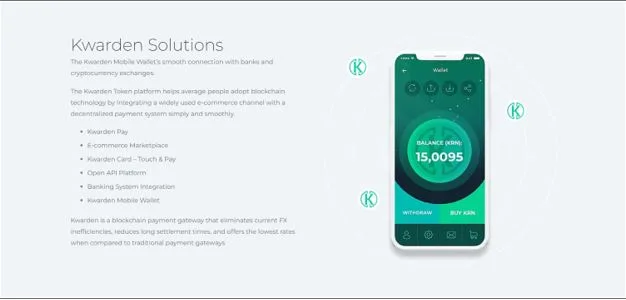How to Choose the Right Remote Desktop CALs for Your Organization
Remote work has shifted from a perk to a standard operating procedure for many organizations. This change requires robust, secure, and efficient systems for employees to access corporate networks and applications from anywhere. A key component of this infrastructure is the Remote Desktop Services (RDS) environment, which allows users to connect to a centralized server. However, to maintain compliance and ensure legal access, businesses need the correct licenses.
This guide will explain the fundamentals of the RDS User CAL (Client Access License). Understanding how this license works is crucial for any business that relies on remote desktop capabilities. We will cover what an RDS User CAL is, its primary benefits, and how it compares to its device-based counterpart, helping you make an informed decision for your organization’s needs.
What is a Remote Desktop Services CAL?
A Remote Desktop Services Client Access License, or RDS CAL, is a mandatory license that gives users or devices the right to connect to a Remote Desktop Session Host. Every user or device connecting to an RDS environment needs a CAL. This ensures that your organization complies with the software’s licensing terms.
Think of it as a ticket. To access the features and functionalities of the remote server, each user or device needs to present a valid ticket—the CAL. These licenses are managed and issued by an RDS License Server to ensure every connection is accounted for and legitimate.
There are two main types of RDS CALs, and choosing the right one depends entirely on how your employees work and access the server.
Understanding the RDS User CAL
An RDS User CAL is a license assigned to a specific person, granting them access to the Remote Desktop Server from an unlimited number of devices. This is the ideal solution for employees who need to connect to the network from various locations and devices, such as a desktop computer at the office, a laptop at home, a tablet on the go, or even a personal smartphone.
With a User CAL, the license is tied to the individual’s user account. It doesn’t matter if they log in from their work-issued machine or a personal device; their access is covered. This flexibility is a significant advantage for businesses with a mobile or hybrid workforce.
Key Benefits of an RDS User CAL
- Ultimate Flexibility for Users: The primary advantage of an RDS User CAL is the freedom it gives to your employees. They are not restricted to a single, specific device to do their work. This supports productivity and accommodates modern, flexible work styles.
- Simplified License Management: When employees use multiple devices, tracking device-based licenses can become complicated and costly. With User CALs, you only need to license each user once, which simplifies administration and reduces the total number of licenses you might otherwise need to purchase.
- Cost-Effective for Multi-Device Environments: If your employees regularly use more than one device to access the server (e.g., a desktop, a laptop, and a smartphone), licensing the user is more economical than licensing each individual device. You pay per person, not per piece of hardware.
- Secure Access from Any Device: It allows employees to securely connect to datacenter applications from both managed and unmanaged devices, whether they are on the corporate network or accessing it from the web.
RDS User CAL vs. RDS Device CAL
The alternative to a User CAL is a Device CAL. As the name suggests, a Device CAL is assigned to a specific piece of hardware. This license allows an unlimited number of users to access the Remote Desktop Server from that one licensed device.
So, when does a Device CAL make more sense?
Device CALs are best suited for environments where multiple people share a single workstation. Think of shift workers in a call center, shared computer terminals in a hospital, or student computer labs at a university. In these scenarios, licensing the device is more practical and cost-effective than licensing every single user who might log on.
Choosing the Right CAL for Your Business
To decide between an RDS User CAL and a Device CAL, analyze your organization’s workflow:
- Choose User CALs if: Your employees need to access the network from multiple devices (laptops, home PCs, tablets) or work remotely and require flexible access.
- Choose Device CALs if: Multiple users share a single device to access the server, such as in shift-based roles or public-facing terminals.
For many modern businesses, a hybrid approach might be the most effective. You could use User CALs for your remote and office-based employees who use multiple devices, and Device CALs for shared workstations in common areas.
Why Licensing Compliance is Non-Negotiable
Failing to acquire the necessary RDS CALs for each user or device is a significant compliance risk. During a software audit, any unlicensed access can lead to hefty fines and legal complications. Beyond the legal requirements, proper licensing ensures that your remote desktop environment remains secure, stable, and fully supported.
When setting up a new remote desktop environment or expanding an existing one, it’s essential to account for the number of users or devices that will need access and purchase the appropriate number and type of CALs. These licenses are available in various pack sizes to suit the needs of your organization, whether you have a small team or a large enterprise workforce.
Investing in Secure Remote Access
An RDS User CAL is more than just a license; it’s an enabler of modern, flexible work. By providing employees with secure access from any device, you empower them to be productive no matter where they are. This investment streamlines license management for your IT department, ensures compliance, and supports the dynamic needs of your workforce. By understanding the distinction between User and Device CALs, you can create a licensing strategy that is both cost-effective and perfectly aligned with your business operations.




